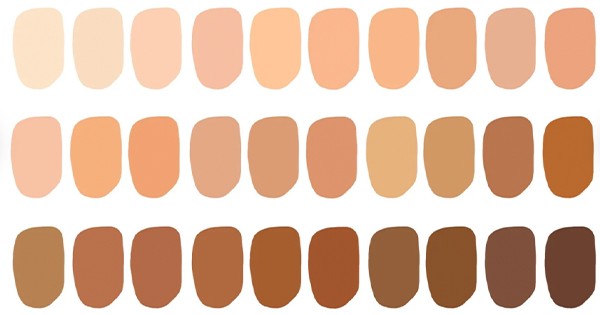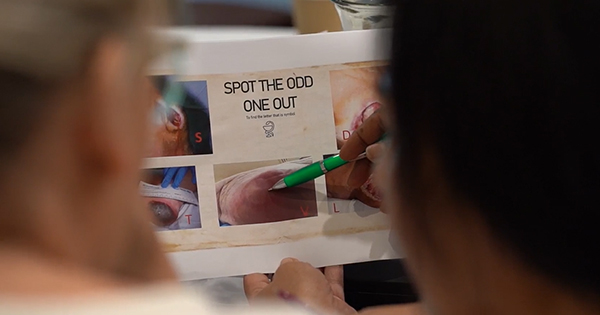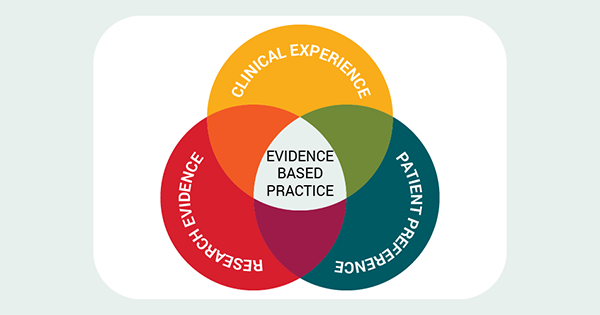In previous papers in this series, we have considered a variety of approaches to research design — the methodologies that underpin the approaches to answering specific research questions. We have seen that the methodologies are in turn divided, primarily, into two paradigms: qualitative and quantitative. In the quantitative paradigm, research answers questions about things which can be measured and quantified, while qualitative research asks questions about people’s experiences, understanding and beliefs about the world.
In order to effectively answer research questions within a paradigm, the choice of methodology is important. For example, to prove the efficacy of a new dressing for venous leg ulcers, a quantitative, randomised controlled trial may be required.While to understand what it is like to experience living with the ulcer may require a, qualitative, phenomenological study.
Similarly, the choice of data collection tools, methods, is important in reflecting the type of information needing to be collected to address the research aims and chosen methodology. For quantitative research, this may mean measuring things like the rate of wound healing, but for qualitative research, this might mean asking people about their experiences of having a venous ulcer, for example.
This article will explore the nature of observation as a method of data collection for things that can only be observed to be understood and consider some of its pros and cons.
Qualitative or quantitative?
Observation is a data collection method which may be used in either qualitative or quantitative research. The way in which observation is applied differs between the two paradigms, as one might expect.
In qualitative research, observation is used to collect data about what people do, the things which are important to them and applying subjective interpretations (Pope and Mays, 2020). In quantitative research, observation is used to collect and quantify things using set parameters and criteria (Ellis, 2022) – this may mean using a schedule of observations and quantifying particular observations, e.g. when nurses wash their hands.
Because of its versatility as a data collection method, observation can be used in mixed methods research or to triangulate the findings from research. In this paper, we will start to consider observation as a qualitative method while we will explore its place in quantitative research in a subsequent paper in this series.
Why observe?
Qualitative research sets out to answer questions about what it is to be a human. Qualitative research uses two key approaches to data collection:
- Interviews (individual and focus group)
- Observation
Interviews allow the researcher to understand what people say they experienced, think, feel and understand, while observation allows the researcher to see how people behave in a given situation and what things and people may be important to them who interact with them (Ellis, 2022).
Observing how people behave and interact with each other and the world provides insights into actual behaviours as opposed to what people say they do (Busetto et al., 2020) – which may be different! In this way, observation in its many forms can answer questions that interviews cannot (Parahoo, 2014). As with all subjective data collection, this is subject to the interpretations that the observer places upon what they see.
Observation, in the qualitative sense, seeks to establish the reality of what people do subject to the interpretation of the observer, and not, like interviews, the interpretations of the researcher interpreting the interpretations of the participant.
When to use observation
Observation as a method has a number of uses:
- Exploring a new topic, exploratory research, about which little is known.
- When a subject is complex and cannot be approached using other methods.
- To triangulate with other research methods to gain a more complete picture of a situation.
Initial exploratory research using observation can shed light on new areas of practice and behaviour and be used to create more focussed research questions. For example, understanding how practitioners react to a new wound dressing regime may be a broad topic which is better defined after observation.
Similarly, understanding a new wound care regime is complex and observation allows the researcher to “get their head around” various elements of it – the processes, the practices, the experiences of healthcare professionals and of patients. This allows for more informed, and possibly more complex, exploration of the topic.
Triangulation using observation is very useful indeed. Taking the same example, observing professionals undertaking wound management using a new regime, observations may illustrate the issues they raise in interviews as being a true representation of what happens or not. In this sense, as Pope and Mays (2020) point out, observational studies can be used to see if people actually do what they say they do in a given situation.
Observational studies are also useful for observing groups of people and what goes on in organisations. Groups of people, nurses in a community team, organisations and hospitals are complex organisations and to be able to understand them, explain what they do to other people, or explain why they are not working as they should, may require a period of prolonged observation. We will explore this in more depth in the next paper in this series.
Key features
In the qualitative sense, observational data collection takes one of two forms:
- Participative
- Non-participative
To understand the reasons for this, it is important to understand that qualitative observational research has its roots in anthropology, the study of humans and human behaviours, and ethnography, the study of groups of people and cultures (Ellis, 2022). The purpose of the types of research which underpin these disciplines is to better understand people and the beliefs which drive their behaviours.
In participative observation, the researcher becomes part of the group which they are observing, e.g. a nurse studying the culture of a team of tissue viability nurses might be a member of that team. In non-participative observation the person is not part of the group being studied, e.g. a researcher observing hand hygiene practices in a home health care (McDonald et al., 2021).
In non-participative observation, the observer is said to be on the outside looking in, while in the participative research setting they are on the inside and part of the culture (Busetto et al., 2020). Again we will look at this in more detail in the next paper in this series.
Benefits of observation
As a qualitative data collection method observation has a number of clear benefits:
- It can be used to study complex or new behaviours
- It allows the researchers to see what really happens
- It allows research in the ‘natural setting’
- A lot of data can be collected quickly.
- They can be used to study ‘wicked problems’ (those which are difficult to study using other methods (Fix et al, 2022)).
This all means qualitative observations can be useful in establishing a baseline for other studies and in generating additional questions for research, e.g. why do people behave as they do in that situation?
Downsides to observation
Qualitative observations are subject to a number of potential problems:
- It is difficult to know if the data reported is a true representation of what happened – it can have low validity (Ellis, 2022)
- Its interpretation can be very subjective
- It is subject to issues with rigour and credibility
- It can be intrusive
- The ethics of it are difficult to manage in some cases
- Participant observers can lose objectivity quite quickly.
These mean that observational studies require considerable planning and thought and researchers may require supervision and support to help them remain impartial.
Conclusions
This paper has identified that observational research methods have a place in quantitative and qualitative research. We have seen that in the qualitative sense, observation may be done from within the group being observed or as an outsider. We have identified that the purpose of observation in the qualitative sense is to understand what people do, as opposed to qualitative interviews, which seek to understand what people might say they do.
Observational qualitative research is more complex than it might first appear, after all. As this paper has shown, it sets out to help researchers understand human behaviour both singularly and as part of a group.
In the next paper in this series we will explore how qualitative observation is undertaken and what this means for the sorts of conclusions which can be reached using this method. In the subsequent paper in this series, observation as a quantitative research method and the sorts of questions it might be used to answer will be considered.







